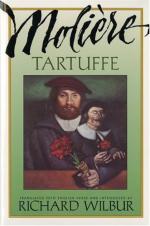|
This section contains 11,006 words (approx. 37 pages at 300 words per page) |

|
SOURCE: “Comic Theory, Molière, and the Comedy-Ballets,” in Music, Dance, and Laughter: Comic Creation in Molière's Comedy-Ballets, Biblio 17, 1995, pp. 21-43.
In this excerpt, Fleck reviews comic theory from Aristotle to the twentieth century as a context for examining Molière's comic method in his comedy-ballets, focusing on notions of paradox and realism.
I. Major Ideas on the Comic: Some Classic Views and Problems
Comedy, the comic, and laughter constitute a famously problematic and ill-defined area of thought; one can scarcely discuss the three terms apart from each other, but each presents problems of definition. For Umberto Eco, the comic is an “umbrella term” covering a wide range of phenomena—irony and the grotesque among many others—and thus susceptible of no single definition (“Frames” 1). Western definitions of comedy as well as of the comic have generally revolved around such ideas as error and vice, superiority and...
|
This section contains 11,006 words (approx. 37 pages at 300 words per page) |

|


